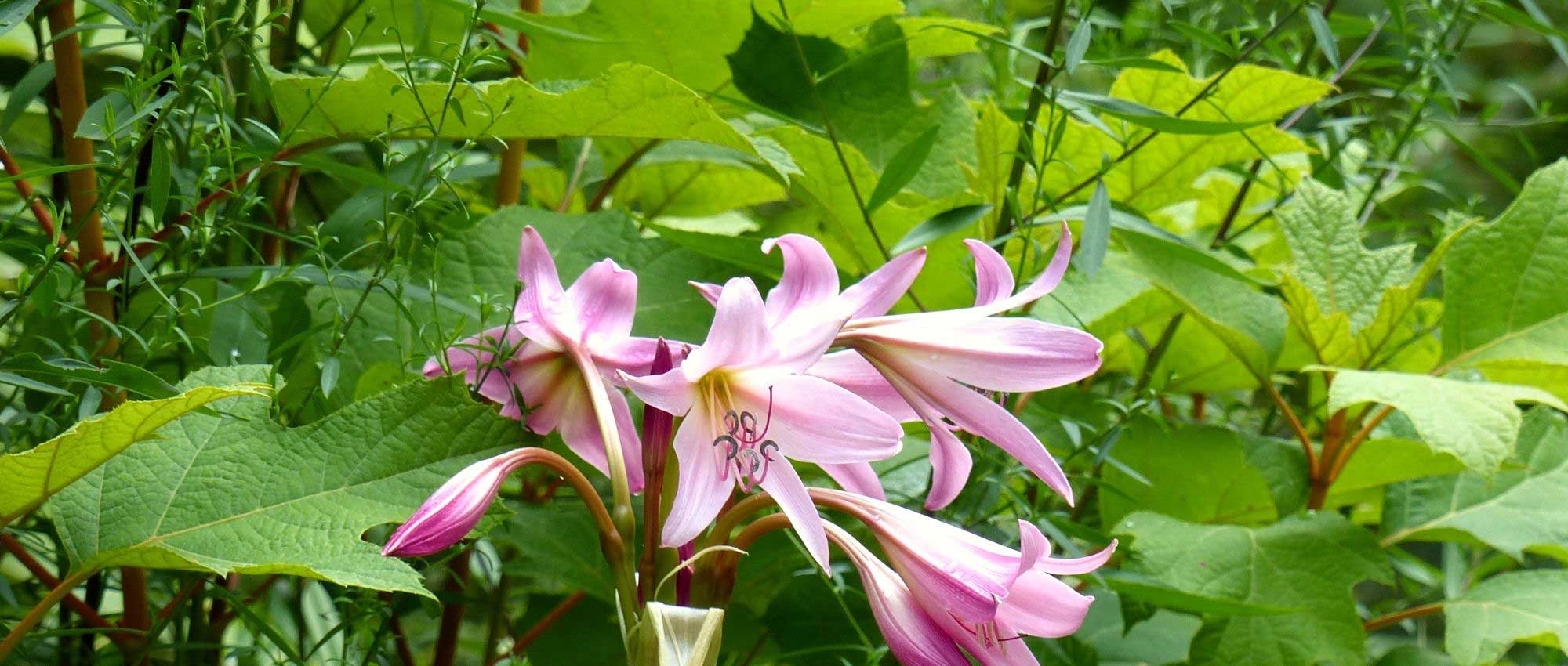
10 bulbous plants with XXL flowers
to easily create an exceptional flowerbed!
Contents
Some bulbous plants offer truly spectacular flowering! Cardiocrinum, lilies, Allium schubertii, giant dahlia, amaryllis: these plants impress with their giant flowers. Simply include them in a border to ensure a real spectacle! Some are extravagant and will form the centrepiece of a border, while others remain very romantic and delicate, and are a little easier to combine in the garden. You can pair these bulbous plants with other perennials or bushes bearing giant flowers as well as with plants with lush foliage (Gunnera, Tetrapanax, peonies, daylilies, etc.), or, conversely, tone down their flowering a little and bring contrast with small delicate flowers, such as those of gaura, sanguisorba, knautia or Linum perenne. They are perfect alongside plants with a very free, airy habit: Verbena bonariensis, Persicaria amplexicaulis, grasses, Gaura, Cosmos, Dierama, etc.
These plants, which spend the dormant season underground, draw on their storage organs for resources to produce magnificent flowering. For simplicity, we have also included in this guide some plants that form tubercles or fleshy roots (Eremurus, dahlias…) rather than limiting ourselves to true bulbs.
Discover our 10 most beautiful bulbous plants with XXL flowers and some tips for successfully growing them!
Cardiocrinum giganteum
Cardiocrinum giganteum, nicknamed Giant Himalayan Lily, bears tall spikes of flowers in summer, reaching 1.8 m in height! It is not a true lily, although the shape of its flowers somewhat resembles one. It is an uncommon plant, too rarely cultivated in gardens. Flower spikes can bear up to 20 flowers — very long, trumpet-shaped, each measuring 15 to 20 cm long. They are white, shaded with purple at the centre. With its exuberance, habit and height, it rivals the Lily ‘Honeymoon’! Cardiocrinum is a plant that thrives in woodland (shade or partial shade), in fresh, humus-rich soil.
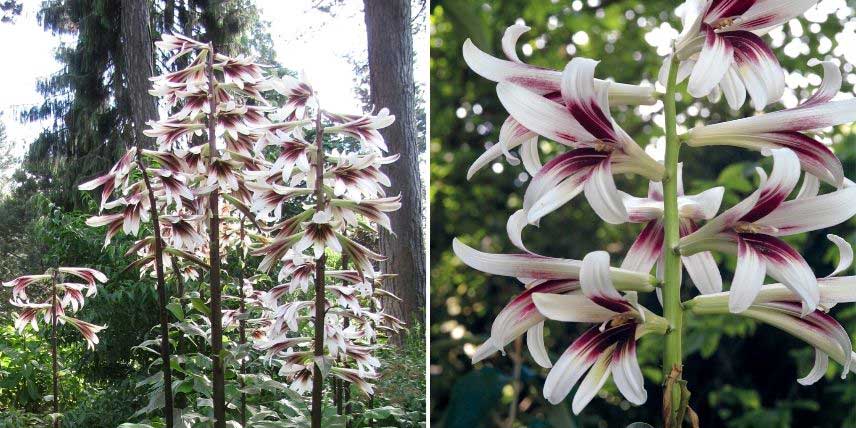
Immense flower spikes of Cardiocrinum giganteum
Read also
12 giant and imposing perennial plantsGiant lily 'Honeymoon'
‘Honeymoon’ is one of the most spectacular lilies! It is an exuberant plant that produces in July–August immense flower spikes, which can reach 2 metres in height and are made up of large yellow flowers 20–25 cm in diameter! The flowers are trumpet-shaped, with recurved petals and six long stamens at the centre. They are pleasantly scented. Its very exotic look and the brightness it brings to the garden are much admired! Plant it in rich, very well-drained soil, because like other lilies, its bulb dislikes winter damp that could cause it to rot.
Discover other Summer flowering bulbs
View all →Available in 1 sizes
Available in 1 sizes
Available in 1 sizes
Available in 2 sizes
Available in 1 sizes
Available in 1 sizes
Available in 1 sizes
Available in 2 sizes
Available in 2 sizes
Available in 1 sizes
Allium schubertii
Of all ornamental Alliums, Allium schubertii is probably the one that produces the largest inflorescences! These can reach up to 30 cm in diameter and are made up of small star-shaped flowers that open successively from the centre of the sphere outwards. It is not very tall, not exceeding 50 cm in height, but forms a real focal point in a border. It is ideal in a graphic, contemporary garden! Plant in autumn, in well-draining soil and in a sunny spot. If you like Alliums, you can also choose Allium christophii or Allium ‘Globemaster’, which also produce large inflorescences of around 20 cm in diameter.
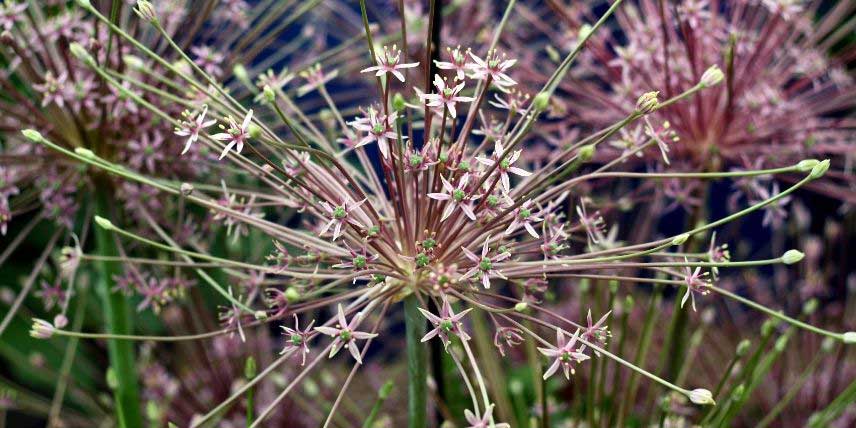
Enormous inflorescences of Allium schubertii (photo Tanya Hart)
Read also
10 XXL flower bushesEremurus himalaicus
Eremurus himalaicus is a large perennial reaching up to 2 metres in height when in flower. It produces in May–June long, erect, very upright clusters of flowers measuring 70 cm to 1 m long, composed of a multitude of small white flowers. Flowers open successively from base of cluster to top. Eremurus develops from curious fleshy roots resembling tentacles. Simply plant them in autumn about 7 cm deep in a freely draining substrate in full sun.
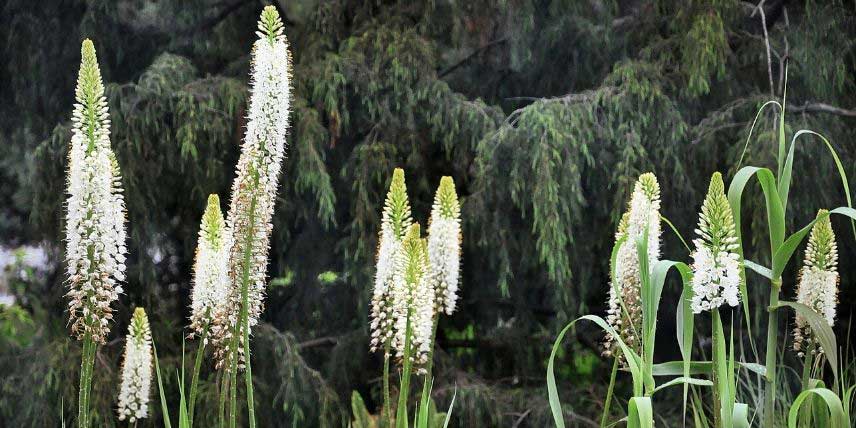
Long white inflorescences of Eremurus himalaicus
Giant Dahlia 'Café au Lait'
Dahlias offer large flowers that can be single or double and are declinate in a wide range of colours! We particularly recommend variety ‘Café au Lait’ which bears from July to October huge fully double flowers measuring between 20 and 25 cm in diameter. They reach 1 m – 1.50 m in height and have a beautiful cream colour, very slightly orange. This dahlia declinates in different shades: ‘Café au Lait Rosé’, ‘Café au Lait Twist’ (with cream-yellow petals striated with pink), ‘Café au Lait Royal’ (with a mix of yellow-orange-pink colours)… Dahlias from this range share very delicate, pastel shades that will fit easily into romantic or cottage gardens, alongside roses, foxgloves, lilies, clematis fargesii Summersnow… There are also other very beautiful dahlia varieties that offer giant flowers. This is the case, for example, of ‘Kelvin Floodlight’, ‘Penhill Watermelon’, ‘Life Force’ or ‘Striped Emory Paul’. Ideally plant them in spring after last frosts, in good garden soil, fresh and well drained, and bring tubercles under cover for winter to protect them from cold.
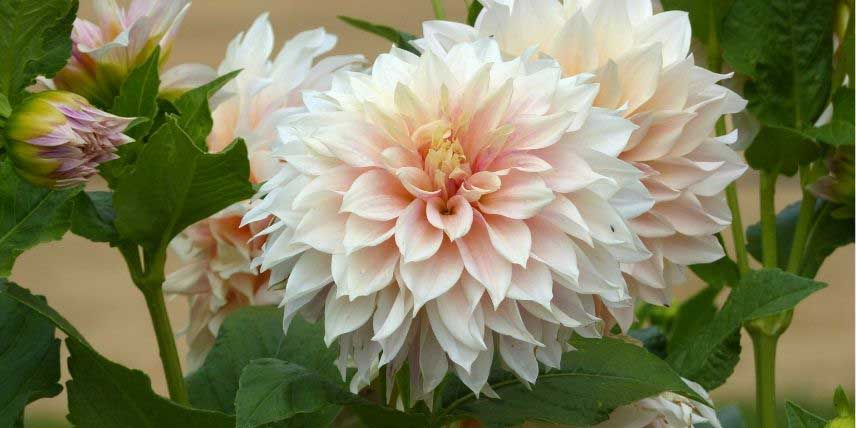
Large fully double cream-coloured flowers of dahlia ‘Café au Lait’
Arum Zantedeschia aethiopica 'Himalaya'
Among Italian arums, the variety Zantedeschia aethiopica ‘Himalaya’ is the most spectacular! This giant bulbous plant reaches over 1.80 m in height and produces, from May to August in successive waves, large white trumpet-shaped flowers, lightly scented. They are composed of a central spike (spadix), yellow in colour, wrapped in a large flared white bract (spathe). Its luxuriant foliage, formed of large sagittate leaves, glossy green spotted with white, is also much admired. This Zantedeschia likes moist, fertile soil and needs protecting in colder regions, as it does not tolerate temperatures below −7 °C. It is ideal for creating an exotic setting alongside other plants with giant foliage, such as Gunnera, ferns, Tetrapanax, cannas, etc.
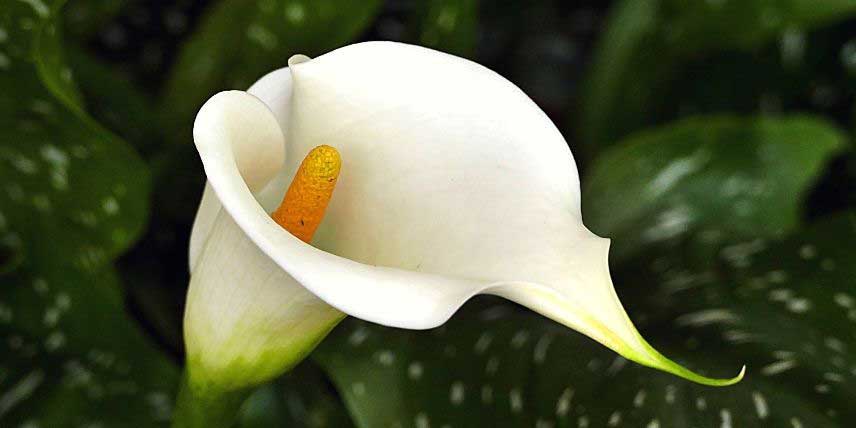
Flowering of Zantedeschia aethiopica (photo Bernard Spragg, NZ)
Allium 'Globemaster'
Ornamental Allium ‘Globemaster’ is truly spectacular! It forms in spring, in May–June, large, round umbels 18–22 cm in diameter, composed of star-shaped violet flowers with six petals. It is slightly smaller but more colourful than Allium schubertii. The umbels are borne on sturdy flower stems, reaching 80 cm in height. When it suits the spot, Allium ‘Globemaster’ produces numerous small bulbs beside the parent bulb, enabling rapid multiplication. In the garden, to help it thrive, plant it in full sun, in well-drained soil. It also tolerates calcareous soils. We recommend planting several bulbs together in a bed to create a more impressive mass effect, and pairing them, for example, with catmints (Nepeta), peonies, oriental poppies, Lavandula ‘Papillon’, hardy geraniums…
And if you like alliums, also discover Allium christophii.

Huge mauve inflorescences of Allium ‘Globemaster’
Amaryllis
Amaryllis are also appreciated for their impressive flowering! They produce large trumpet-shaped flowers, often bright red in colour, although there are also white- or pink-flowered varieties, and even yellow ones! They are often grown in pots indoors to provide blooms in the home at Christmas… But for planting in the garden, we recommend choosing the Amaryllis sonatini, which are relatively hardy, tolerating down to −10 °C! Discover, for example, Amaryllis Sweet Sixteen, with pink flowers, Amaryllis Alasca, which bears double white flowers, Balentino, with bright red flowers striated with white, or Marrakech, with yellow flowers! Planted outdoors, these Amaryllis will flower not in winter as those that have been forced, but rather in summer, in June–July.
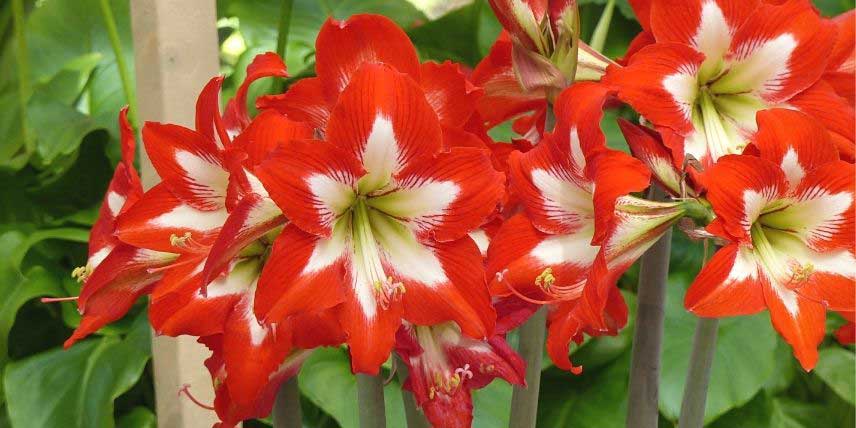
Large bright red and white flowers of Amaryllis sonatini ‘Eyecatcher’
Crinum powellii
Crinum powellii is a superb bulbous perennial that produces from July to September large trumpet-shaped flowers, nicely flared, measuring about 13 cm in length and diameter. They are pure white for variety ‘Album’ or pink for variety ‘Rosea’. A majestic, very elegant flowering! This Crinum reaches up to one metre in height when in flower, and bears large strap-shaped leaves, bright green, semi-evergreen. It is hardier than others, as it tolerates down to -10 °C. However, it prefers warm, sunny exposure, as well as fertile, well-draining soil. With its exotic look, it is particularly suited to Mediterranean gardens and seaside gardens. In cool regions, it can easily be grown in a pot and brought under cover for winter.
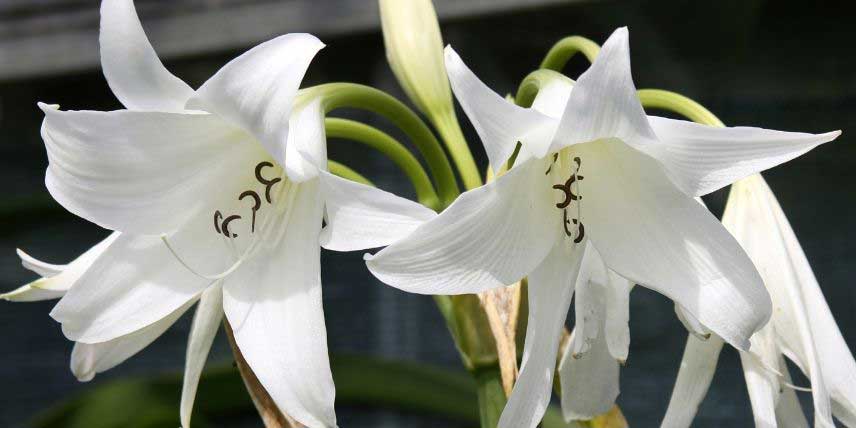
Elegant flowering of Crinum powellii ‘Album’ (photo Drew Avery)
Dracunculus vulgaris
Dracunculus, or dragon lily, is certainly the most intriguing plant in this selection! This cousin of arums bears in June a huge funnel-shaped inflorescence, with at its centre a long purplish-black spike, the spadix, surrounded by a large dark purple bract with velvety sheen, the spathe. Size of inflorescence is quite variable: depending on plant’s age and growing conditions, it ranges from 20 cm to 60 cm, and can even exceed one metre in ideal conditions! This surprising flowering emits a smell of rotting meat to attract flies that will pollinate the flowers! Leaves of Dracunculus are splendid, neatly divided into leaflets, and borne on a stem strangely speckled with purple. As for hardiness, Dracunculus tolerates temperatures down to -10 °C. It needs planting in loose, rich, well-draining soil, in a warm, sunny position (it will also tolerate partial shade in Mediterranean regions).
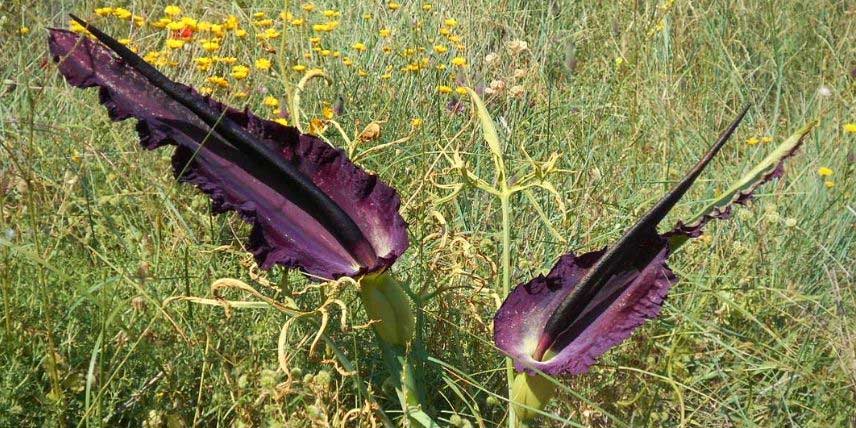
Surprising flowering of dragon lily, Dracunculus vulgaris (photo Candiru)
- Subscribe!
- Contents
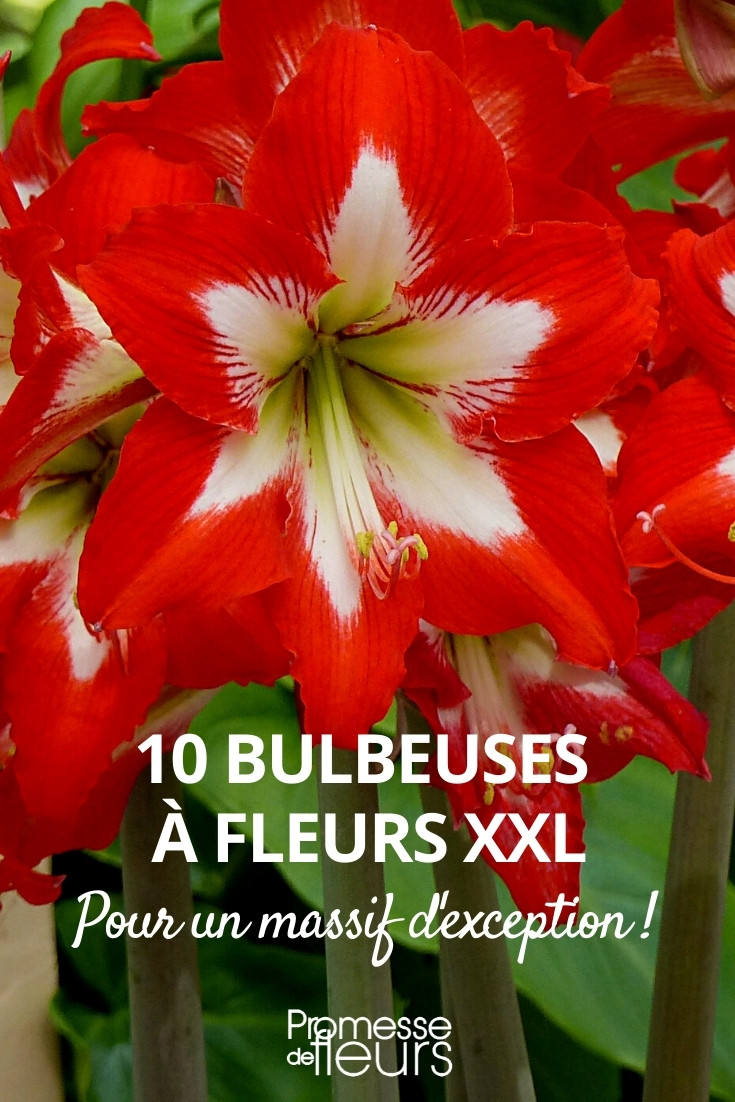































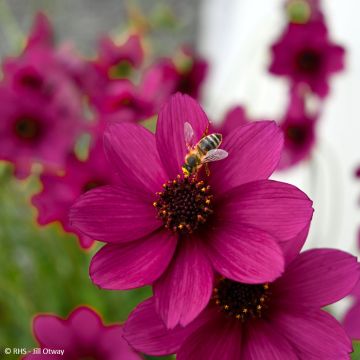
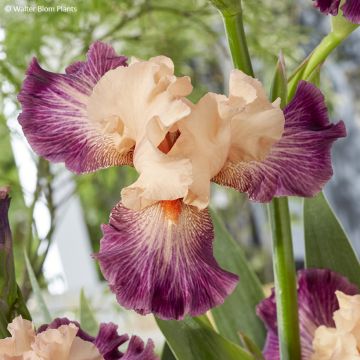
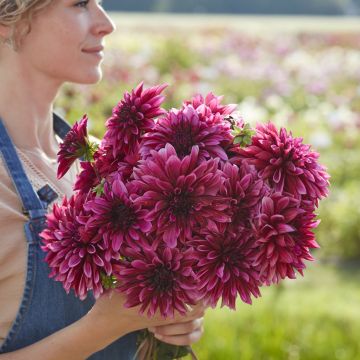
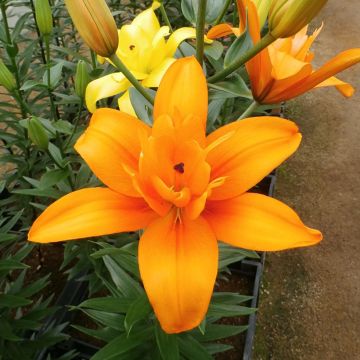
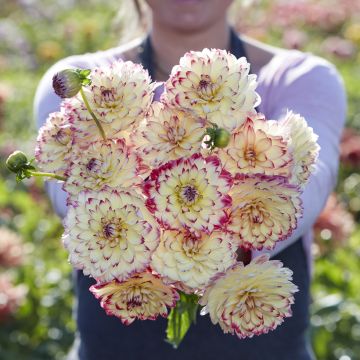
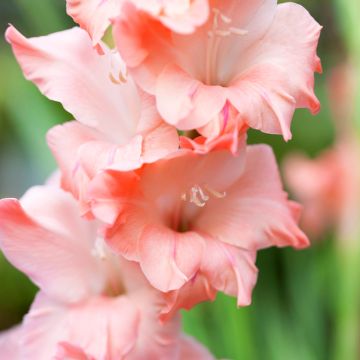
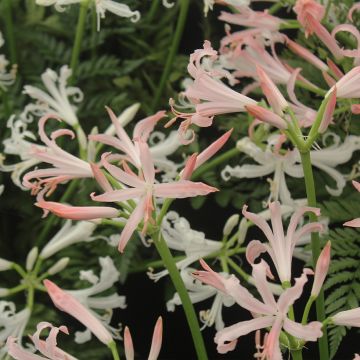
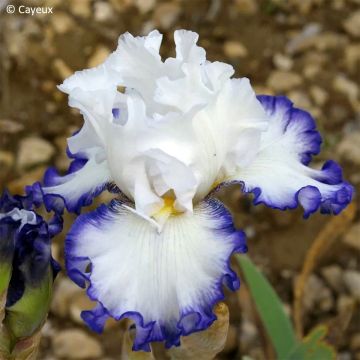
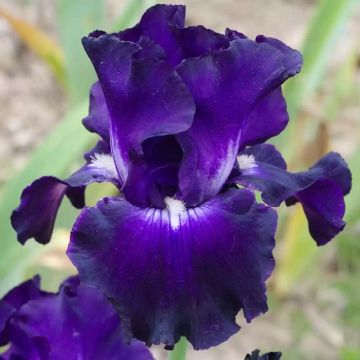
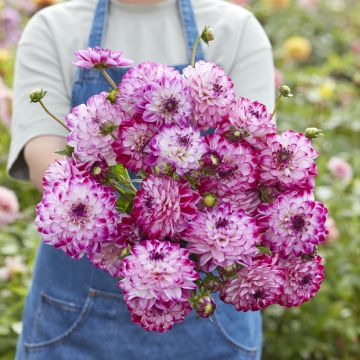
Comments